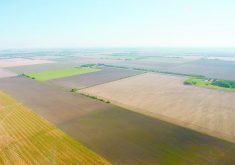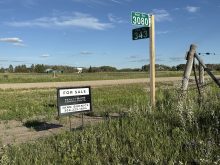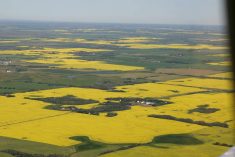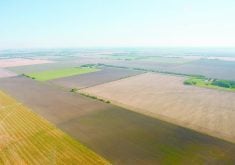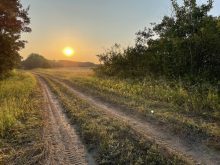Saskatchewan first affected | Alberta and Ontario prices remain strong and are expected to rise
Despite the explosion in farmland values in recent years, Saskatchewan remains home to some of the cheapest prices in Western Canada.
It’s also the first province to feel the effects of softening commodity markets and tighter bottom lines on Prairie farms this year, according to a new report published by a real estate company operating in Canada.
“The sellers know that the prices aren’t crawling up like they were for the last couple of years,” said Wally Lorenz of Remax in the Battlefords, Sask.
Read Also

Trump’s tariffs take their toll on U.S. producers
U.S. farmers say Trump’s tariffs have been devastating for growers in that country.
Remax published the farmland price report, which surveys 20 Canadian communities, Sept. 30. Prices generally rose across the country, but gains were smaller than in recent years.
“Now (prices) are starting to level off and even starting to come back down a little as well. You don’t have as many buyers and you definitely don’t have as many sellers as we had a year ago,” said Lorenz.
Saskatchewan led all provinces in Farm Credit Canada’s most recent report on farmland values, rising 28.5 percent last year.
Total farm debt has also climbed in recent years, with Statistics Canada reporting the number at $78 billion across Canada in 2013, up $5 billion from the previous year.
In Lorenz’s region, what the report calls northwest and central west Sask-atchewan, the market has shifted this year.
According to the report, prices have risen just $150 per acre in northwestern Saskatchewan with the number of sales declining and fewer owners looking to sell.
Lorenz said the market was pushed up by optimistic producers and out-of-province investors when commodity prices were high. The advent of $9 per bushel canola or less has seen interest wane.
“Commodity prices (are) coming down, and if there is more land that comes onto the market, it’s going to be pretty limiting as to how many buyers can be out there,” he said.
“You’re seeing buyers buying smaller parcels, not the big parcels of land, too. They’re not capable of doing that anymore. They’re adding on two, three quarters of land onto their … operation, not two or three sections that was happening there for two or three years.”
Farmland prices were cheapest in east-central Saskatchewan, where some pastures listed at $950 per acre and farmland at $1,150 to $1,350 per acre.
The report pegs Alberta and a few locations in Ontario as the only regions of the country where farmland prices are expected to grow significantly over the next year. Stable prices or moderate growth are forecast everywhere else.
“It didn’t (affect sales in our area). We are having a problem here with a shortage of land for sale, not a shortage of buyers,” said Allan Fox, an agent in Lethbridge whose region has seen similar dynamics over the past several years.
In southern Alberta, land prices vary from $1,000 to $10,000 per acre, according to the report, up from $800 to $8,500 the previous year. Premium prices are paid for irrigated and tile drained land, but the greatest demand is for dry land.
Prices were not that high in central Alberta but still higher than what’s seen elsewhere on the Prairies. The report links the demand to expanding farms and interest from buyers looking for recreational land.
“If I get a quarter (section), I can sell it. If I get a half, I can sell it. If I can get bigger acres, I can sell it,” said Fox.
“Right now, the price of grain is starting to fall, so therefore you’d think that’d slow things down, but it hasn’t.”
A rebounding cattle sector has also seen renewed interest in grassland, with prices spanning $1,000 to $1,500 per acre.
Lorenz said falling commodity prices could squeeze farmers’ bottom lines and force some of them to sell land to free up some cash.
“Right now, anybody that’s moving ahead and doing buying, they’re very astute managers that have got their operation in order,” he said.
“They know, day to day, where they’re at with their business.… You’ve got to run it like a real hard-core business.”



